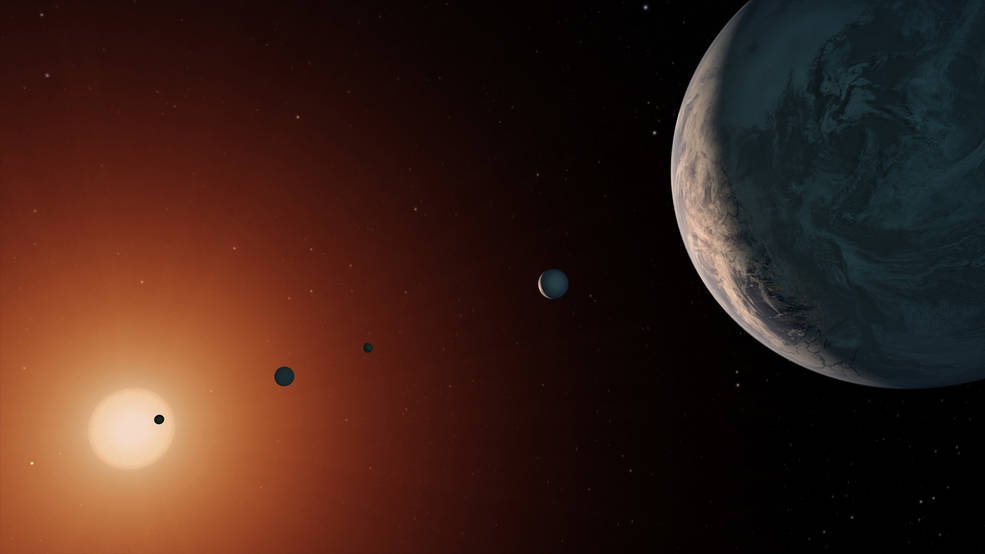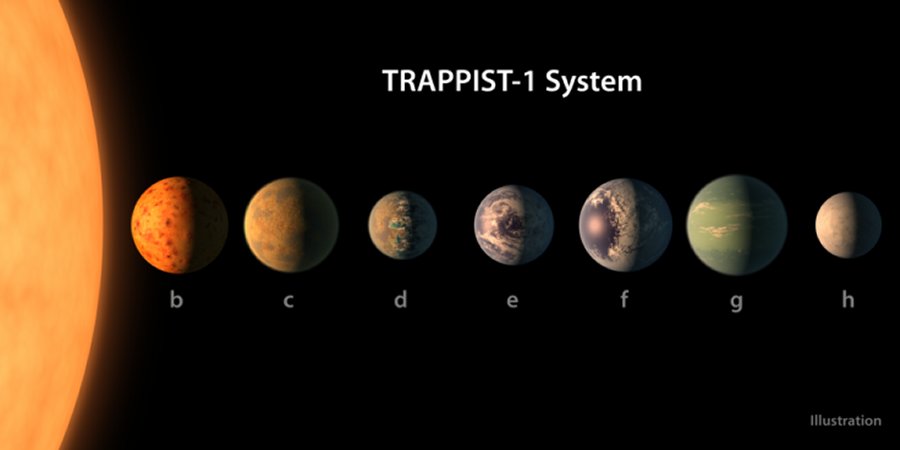MessageToEagle.com – One of the most intriguing planetary systems discovered to date is TRAPPIST-1, a system of seven Earth-size worlds orbiting an ultra-cool dwarf star about 40 light-years away.
The TRAPPIST-1 star is between 5.4 and 9.8 billion years. It means it is up to twice as old as our own solar system, which formed some 4.5 billion years ago.

A new study suggests that two exoplanets in the TRAPPIST-1 system have been identified as most likely to be habitable.
“The TRAPPIST-1 star is very old and dim, the surfaces of the planets have relatively cool temperatures by planetary standards, ranging from 400 degrees Kelvin (260 degrees Fahrenheit), which is cooler than Venus, to 167 degrees Kelvin (-159 degrees Fahrenheit), which is colder than Earth’s poles,” PSI (Planetary Science Institute) Senior Scientist Amy Barr said.
“The planets also orbit very close to the star, with orbital periods of a few days. Because their orbits are eccentric –not quite circular – these planets could experience tidal heating just like the moons of Jupiter and Saturn.”

The planets studied are referred to by letter, planets b through h, in order of their distance from the star. The two interesting planets, named d and e are the most likely to be habitable due to their moderate surface temperatures, modest amounts of tidal heating, and because their heat fluxes are low enough to avoid entering a runaway greenhouse state.
A global water ocean likely covers planet d.
The team calculated the balance between tidal heating and heat transport by convection in the mantles of each planet. Results show that planets b and c likely have partially molten rock mantles.
The paper also shows that planet c likely has a solid rock surface, and could have eruptions of silicate magmas on its surface driven by tidal heating, similar to Jupiter’s moon Io.
Original story – here.
MessageToEagle.com







